Description
Introduction
In the world of premium meats, a frozen lamb half carcass occupies a special niche. It offers exceptional value per kilogram, flexibility in butchering, and access to a broad range of cuts for cooking. But working with a half carcass—especially in frozen form—requires knowledge, planning, and care. In this article, we will walk you through everything you need to know: from sourcing and safety, to breaking down, cooking, storage, and market trends.
Key headings:
-
What is a frozen lamb half carcass?
-
How lamb carcasses are produced & graded
-
Sourcing and selecting quality frozen halves
-
Safe thawing and handling
-
Butchering the half carcass into primal and subprimal cuts
-
Culinary uses and preparation of each cut
-
Nutrition, advantages & limitations
-
Storage, shelf life, and re-freezing
-
Market trends, trade, and pricing
-
Tips, pitfalls, and FAQs
1. What Is a Frozen Lamb Half Carcass?
A lamb carcass is the animal after slaughter, evisceration, head and hide removal, and usually splitting along the spine. A half carcass refers to one of the two longitudinal halves (left or right) after the carcass is divided. When frozen, this piece is stored at subzero temperatures to preserve quality, slow enzymatic degradation, and inhibit microbial growth.
Because a half carcass still contains all major muscle groups, bones, fat, connective tissue, it serves as a canvas for butchers, chefs, or meat-savvy consumers to break it into primal cuts (legs, loin, shoulder, ribs, shanks, etc.). Frozen halves are popular in wholesale meat supply chains, specialty butchers, restaurants, and serious home users.
Advantages of buying frozen lamb halves include bulk cost savings, control over cut size, and long storage life. But there are challenges: thawing a large frozen mass properly without damaging texture or safety, precise butchering, and ensuring quality from the point of freezing through thawing.
2. How Lamb Carcasses Are Produced & Graded
Slaughter, dressing, and chilling
Lambs are typically slaughtered under strict animal welfare and food safety standards. After bleeding, they are skinned, eviscerated, split, washed, and then chilled (often in cold rooms) to bring down internal temperatures quickly. The chilling helps firm the muscle, reduce spoilage risk, and prepare for cutting. Once chilled, carcasses may be further processed (e.g. trimming) and then frozen.
Grading and classification
Carcasses are often graded by weight, fat cover, conformation, and dressing percentage. Some systems also assess meat color, fat color, and yield. Frozen lamb halves may be marketed by weight class (e.g., 12–17 lbs, 25–35 lbs) or according to standard yield grades. For example, Costco Business lists a New Zealand halal lamb carcass, bone-in, 25–35 lb average, to be kept frozen. Costco Business Center
In France, wholesale prices for frozen whole & half lamb typically lie between USD 10.50 and USD 13.96 per kg (≈ USD 4.76 to USD 6.33 per lb) in recent weeks. Tridge Also, the global trade data shows that Australia, New Zealand, and Uruguay are among the top exporters of frozen lamb carcasses and half carcasses. World Integrated Trade Solution
Freezing for export and storage
Before export, carcasses are often blast-frozen to a very low core temperature to maintain quality and slow biochemical changes. Packaging—vacuum sealing, cryo-protectants, and protective wrapping—helps prevent freezer burn or oxidation.
3. Sourcing and Selecting Quality Frozen Halves
To get a high-value product, you need to select wisely.
Reputable suppliers and origins
Look for suppliers with traceability (farm to fork), certifications (e.g., Halal, HACCP, ISO food safety), and cold chain integrity. In Brazil, producers like Copacol offer “Premium Quality Frozen Lamb Half Carcass — Halal, no broken bones.” Copacol
Similarly, Cordobes Foods lists a half lamb carcass (12–17 lbs) frozen for sale. Cordobes Foods
Key quality attributes to check
-
Uniform freezing: No soft center or thawed patches.
-
No obvious freezer burn: Avoid discolored or dried-out edges.
-
Clean cut surfaces: Minimal blood spots or discoloration around bone ends.
-
Correct weight class: Choose a size manageable for your equipment.
-
Good fat cover: A moderate fat layer helps protect against damage and adds flavor.
-
Bone integrity: No fractured or splintering bones.
Cold chain assurance
Ask for documentation: temperature logs during transport, time from slaughter to freezing, thermal packaging, shipping duration. Even the best carcass loses value if thawed and refrozen inadvertently.
4. Safe Thawing & Handling of Frozen Lamb Halves
Proper thawing and handling are critical to preserve meat quality and ensure safety.
Why controlled thawing matters
If you thaw too fast, outer layers may sit in temperature danger zones (4–60 °C or 40–140 °F), allowing bacterial growth. If you thaw too slowly or unevenly, moisture loss and texture changes occur.
Thawing methods
1. Refrigeration thawing (preferred)
Place the frozen half in a refrigerator (0–4 °C) or a cold room. This method is safest and most controlled. For a large half carcass, it may require 48–72 hours (or even more) depending on thickness. Seasoned Advice
2. Cold water thawing
If time is limited, you can immerse the sealed carcass (in waterproof wrapping) in cold water, changing the water periodically. This speeds thawing but requires close monitoring to keep temperature safe. Seasoned Advice
3. Partial cut‐while‐frozen
Some butchers actually begin disassembling a carcass while still partially frozen, removing individual sections to thaw them more rapidly. This method demands experience and sturdy tools. A user commented:
“All you really need is a boning knife and a hacksaw … take the legs off first, work from joints …” Reddit
However, this approach is risky if not done with proper tools and care.
Food safety and internal temperatures
Meat is generally safe indefinitely when frozen. Seasoned Advice But once thawed, it must be kept at refrigeration temperatures until cooking or further processing. Never thaw at room temperature. Seasoned Advice
5. Butchering the Half Carcass into Primal & Subprimal Cuts
Once thawed, the half carcass can be broken down into more manageable cuts. This is where skill, planning, and tools come into play.
Essential tools & workspace setup
-
Sharp boning knives
-
Meat saw (hand bone saw or mechanical)
-
Cleaver (for some joint areas)
-
Meat hooks or hangers
-
Large cutting table with good drainage
-
Clean floor space and good lighting
-
Safety gear (gloves, protective sleeves)
Anatomical reference
A lamb half carcass comprises commonly the following primal regions (some overlap in terminology):
-
Shoulder / Forequarter
-
Rack / Rib section / Loin
-
Leg / Hindquarter
-
Shank / Breast / Flank
-
Neck and sometimes breast plate
A good video overview is provided by Bon Appétit / butcher demonstration: “How to Butcher an Entire Lamb: Every Cut Explained.” YouTube
Another is “How to Butcher a Lamb” by the Bearded Butchers. YouTube
Step-by-step breakdown (simplified guide)
Below is a common approach; experienced butchers may vary the sequence.
-
Remove the shank
Cut through the bone at the knee joint (hind shank) or elbow (front shank). -
Separate the leg from loin / rack
Use the hip and vertebra joints as guides. Cut along the natural seam. -
Remove the shoulder from the rack / loin
Find the shoulder-loin seam, and detach. -
Divide the loin / rack
You can split between fore and loin/rack, and optionally separate rib chops, rib roast, loin chops. -
Trim the breast / flank / skirt
Cut the breast and flank plates, trimming excess fat or membrane. -
Portion subprimal cuts as desired
-
Leg: whole roast, half leg, leg chops, boneless leg
-
Shoulder: shoulder roast, shoulder chops, blade, arm cuts
-
Ribs: rib racks, rib chops, crown roast
-
Loin: loin chops, tenderloin, strip
-
Breast / flank: stewing, ground, braise
-
Be careful with bone cuts: use a saw where needed, and avoid splintering. Many butchers recommend cutting at joints rather than through bone when possible. Reddit
Packaging & labeling
After cutting, package each piece (vacuum seal or wrap well) and label with date, cut name, approximate weight. This ensures you use the most perishable pieces first and maintain inventory control.
6. Culinary Uses & Preparation for Each Cut
One of the main advantages of a half carcass is having access to nearly every lamb cut. Below is a guide to cooking techniques for major cuts:
| Cut / Region | Best Methods | Tips & Flavor Notes |
|---|---|---|
| Leg (whole roast, half leg, leg chops) | Roasting, grilling, sous-vide | Score the fat, season inside & out; med-rare to medium ideal |
| Shoulder | Braising, slow roasting, pulled lamb | Rich connective tissue; benefit from long, gentle cooking |
| Rack / Rib / Loin | Roasting, grilling chops, rib roast | Tender, premium portion; keep bones on for flavor |
| Shank | Braising (e.g. osso buco style) | Long slow cook brings out gelatinous texture |
| Breast / Flank / Skirt | Stewing, slow roast, ground meat | Use these for hearty stews or ground lamb |
| Neck / Foreshank | Stews, soups, slow cook | Flavorful but tougher — treat like beef chuck |
To extract maximum flavor:
-
Marinate or rub ahead of time (using herbs, garlic, olive oil, citrus, yogurt, spices).
-
Let meat come to near room temperature before cooking.
-
Use dry-sear then finish by indirect heat (for roasts).
-
Use thermometers to avoid overcooking.
-
Rest meat after cooking to let juices redistribute.
Sample recipe ideas
-
Herb-crusted rack of lamb
-
Moroccan-style slow-roasted shoulder with preserved lemon & olives
-
Lamb osso buco (braised shanks)
-
Grilled lamb chops with mint chimichurri
-
Lamb slider patties from breast / flank mince
-
Lamb stock / bone broth from bones + trimmings
Because you have bulk material, you can experiment with whole-animal cooking (e.g., spit roast) or staged meals (roast first, then stews using leftover bones and trimmings).
7. Nutrition, Advantages & Limitations
Nutritional profile
Lamb is prized for its rich, savory flavor and nutritional benefits. A typical 100 g of lamb (lean) offers:
-
High-quality protein
-
B vitamins (B12, niacin, B6)
-
Minerals: iron, zinc, selenium
-
Healthy fats (including some omega-3 if pasture-fed)
Fat content varies widely depending on cut and trimming.
Advantages of a half carcass approach
-
Cost-efficiency: Bulk buy tends to reduce per-unit costs.
-
Flexibility: Customize your cuts, sizes, and portions.
-
Variety: Get premium and utility cuts in one purchase.
-
Control over quality: You decide trimming, aging, packaging.
-
Long shelf life: Frozen halves can be stored longer than fresh cuts (with proper packaging).
Limitations & challenges
-
Initial investment: You need cold storage, tools, and skill.
-
Thawing requirements: Requires planning to thaw without quality loss.
-
Butchering labor: If you lack experience, you risk waste or damage.
-
Space: A half carcass is large and heavy; handling may be tricky.
-
Consistency: Without standardized cuts, portions may vary.
8. Storage, Shelf Life & Re-freezing
Storage & packaging best practices
-
Vacuum sealing is preferred to minimize air and oxidation.
-
Use multi-layer barrier bags or cryo films for longer freeze life.
-
Avoid punctures or sharp bones inside packages.
-
Label with cut, date, weight, cooking suggestions.
Shelf life under frozen conditions
When stored consistently below –18 °C (0 °F), lamb half carcasses can remain safe indefinitely, though quality (flavor, texture) may gradually decline over time. Seasoned Advice
Better quality is maintained if used within 12 to 18 months. Beyond that, freezer burn or oxidative rancidity may affect taste.
Re-freezing caution
Avoid refreezing if portions have completely thawed to above ~4 °C (39 °F). If you thaw in the refrigerator and not expose to higher temperatures, small portions (cuts, subprimal) may be refrozen safely, with minimal quality loss. Avoid refreezing a whole thawed half carcass under most circumstances.
9. Market Trends, Trade & Pricing Dynamics
Global trade patterns
According to trade data, in 2019 the leading exporters of frozen lamb carcasses and half carcasses were Australia (USD 44.6M, 8,464 tonnes), New Zealand (USD 33.2M, 5,694 tonnes), Uruguay (USD 11.9M, 2,361 tonnes), and Ireland. World Integrated Trade Solution
In many markets, lamb imports (whole or half carcasses) are a niche specialty, often destined for gourmet restaurants, specialty butchers, or diaspora communities.
Pricing trends
In France, wholesale prices for frozen whole & half lamb in recent weeks ranged between USD 10.50 and USD 13.96 per kg. Tridge
Fluctuations depend on supply (lamb production seasonality, feed costs, disease outbreaks), currency exchange, logistics, and trade policies (tariffs, import quotas).
Regional and local perspectives
In Brazil or Latin America, domestic lamb production is smaller relative to beef and pork, so imports or specialized domestic producers fill a premium niche. Local production may supply some frozen halves, but consumers must check traceability and cold chain integrity.
As consumer demand grows for high-quality meats and artisanal butchery, the segment of frozen half carcasses is likely to gain traction in premium meat retail.
10. Tips, Pitfalls, and FAQs
Best practices & tips
-
Plan ahead: Thawing and butchering take time—don’t expect to do it same day.
-
Mark and map: Sketch out where you’ll cut before you begin.
-
Sharp tools: Keep knives and saws sharp to reduce waste.
-
Cut at joints: Whenever possible, separate by joint rather than sawing through bone.
-
Watch temperature: Keep ambient and meat temperatures low during cutting.
-
Label well: Use clear, permanent labels with date and cut.
-
First in, first out (FIFO): Use most vulnerable cuts first (like ribs, loin).
-
Use trimmings: Bones, fat, offcuts make excellent stock or ground meat.
Common pitfalls & mistakes
-
Attempting to thaw too fast or at room temperature
-
Poor packaging causing freezer burn
-
Inexperienced sawing resulting in bone splinters
-
Allowing meat to sit in ambient zones too long
-
Overcooking by relying just on exterior cues
-
Discarding trimmings rather than using them for broth or mince
FAQs
Q: Can I cook a half carcass directly from frozen?
A: Technically, yes, but it’s impractical. The outside will overcook long before the interior reaches safe doneness. Best practice is to thaw first. Seasoned Advice+1
Q: How long does a lamb half carcass take to thaw?
A: In the refrigerator, likely 48 to 72+ hours, depending on size and thickness. Seasoned Advice
Q: Is meat safe indefinitely when frozen?
A: Yes for safety, but quality (flavor, texture) declines over long time. Seasoned Advice
Q: Which parts are the most valuable?
A: Rack/rib section, loin, and leg commands higher per-kg value. Shoulder and shank are less premium but flavorful.
Q: What about aging?
A: Some butchers prefer to age (hang or wet-age) carcasses before freezing. However, post-freezing aging is limited.
Conclusion
Working with a frozen lamb half carcass can unlock tremendous value, flexibility, and variety of cuts—if done properly. The keys are:
-
Sourcing a high-quality product with assured cold chain
-
Controlled thawing to preserve safety and texture
-
Skilled butchering along natural joints
-
Thoughtful cooking methods for each cut
-
Proper storage, labeling, and utilization of all parts

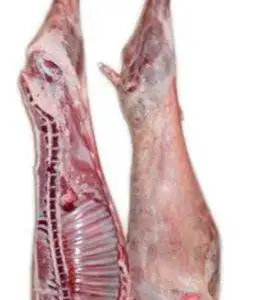
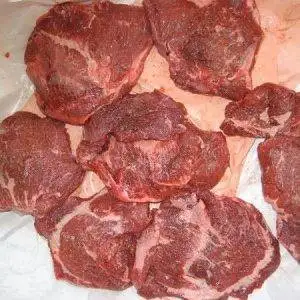
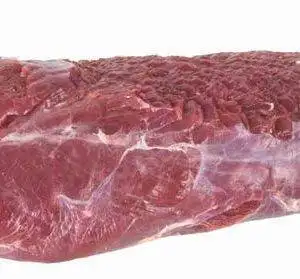
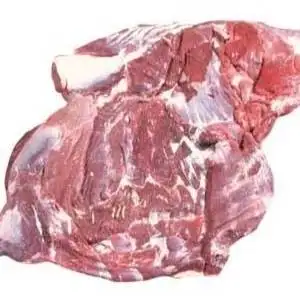
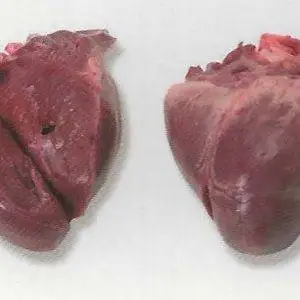
Reviews
There are no reviews yet.